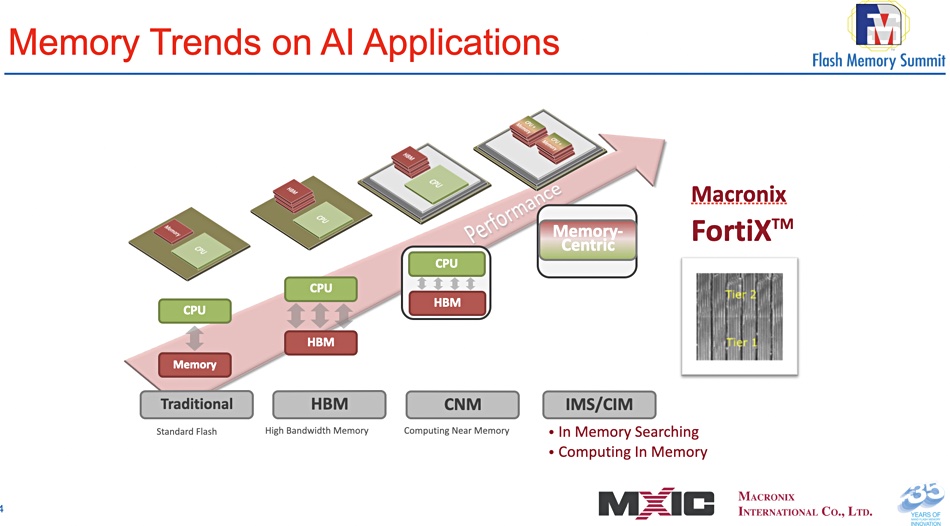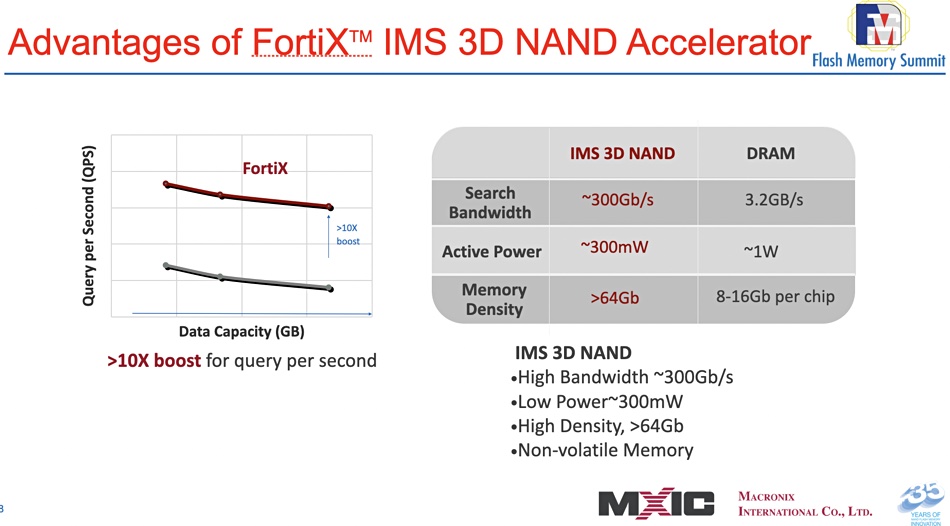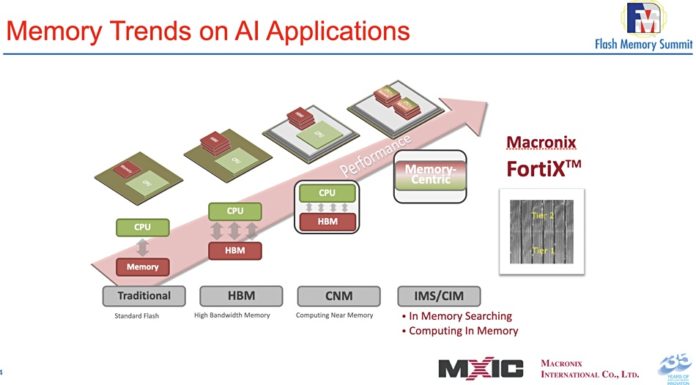NOR and NAND flash vendor Macronix has devised FortiX technology for AI-focused computation inside flash chips.
The Taiwan-based company presented this concept at the FMS 2022 event in Santa Clara earlier this month and it is an implementation of the overall PIM – Processing-in-Memory – concept put forward by Samsung, SK hynix, and others. Macronix is doing processing in NAND instead and presenting it as a memory-centric computing idea.
The amount of AI data to process and the compute-intensive nature of the processing means that data cannot be loaded into memory fast enough to keep compute cores busy. Its better to do some of the processing in the storage drives and so accelerate processing time and save energy on drive-to/from-DRAM data transfers.
Macronix Director of Product Marketing Donald Huang presented the FortiX pitch at FMS 2022, saying that this concept was on trend with the steadily increasing tide of computation and memory getting closer together.

FortiX uses nvTCAM – non-volatile ternary content-addressable memory. Blocks & Files is in new territory here as ternary means base 3. We understand from an academic paper that “TCAM can complete the search function of all data in one clock cycle through hardware parallel processing.” That’s with SRAM and Macronix is working with NAND.
The company is developing 96-layer FortiX 3D NAND with a 64Gbit die in prospect. It’s also developing a 3D NOR flash variant with 32 layers.
A slide from its pitch shows the FortiX NAND having an in-memory search (IMS) function:

It can carry out keyword searches and also Hamming (proximity) searches. This is done far more slowly than a similar search in DRAM but can be quicker than the overall search time when you have to ship the data from the drive to the DRAM, get the search run and then do something with the results. And it saves power.

Macronix suggests FortiX NAND chips can be used for fingerprint, pattern and voice recognition, big data searching, DNA matching, and AI/ML applications in general.
We think that the host-FortiX interaction may be specific to each application and not general, and that we might view FortiX as a specialized domain-specific processor/NAND combo. We don’t know how the processing functions are interwoven with the NAND and await the delivery of more information from Macronix with interest.








